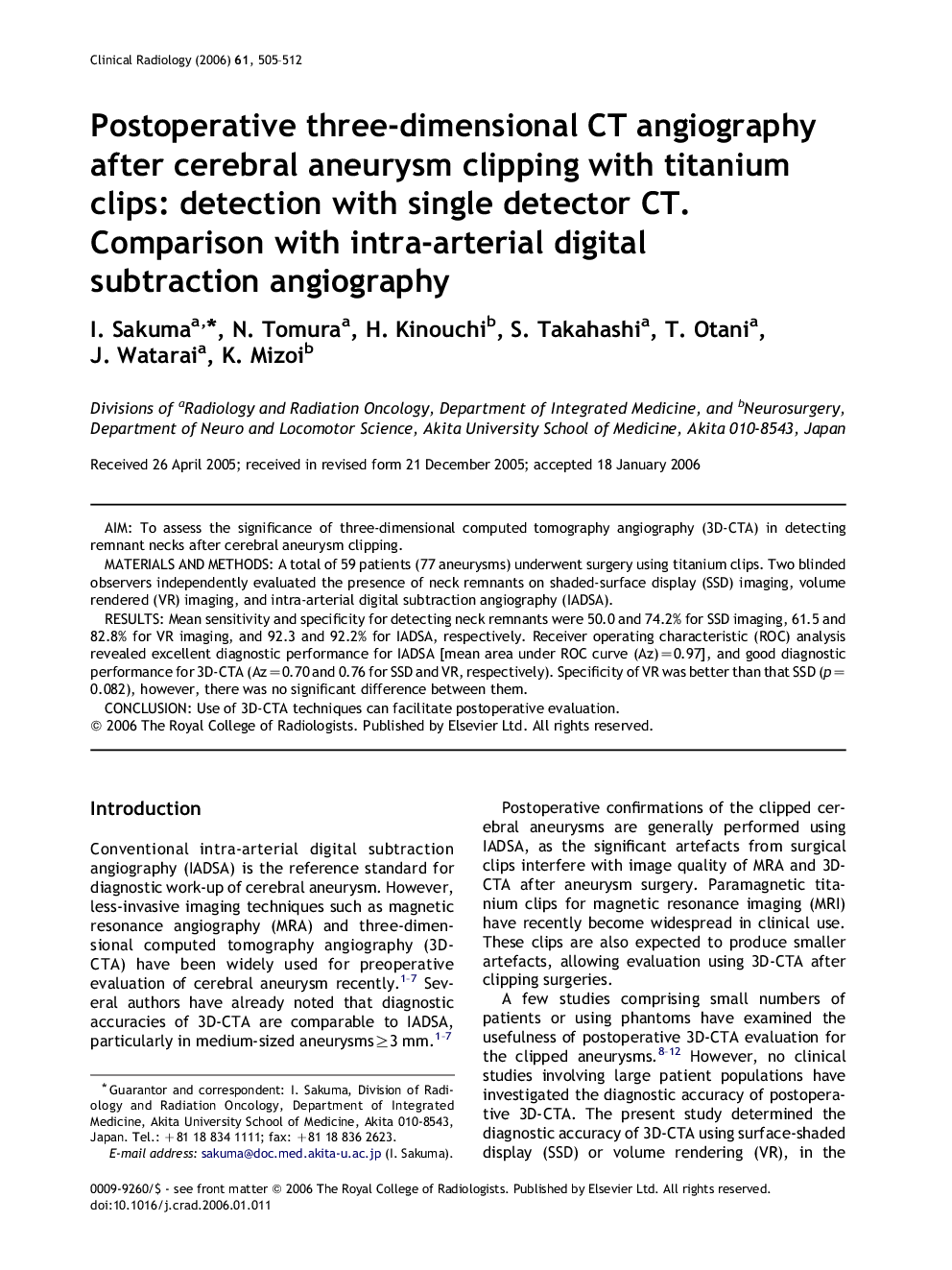| Article ID | Journal | Published Year | Pages | File Type |
|---|---|---|---|---|
| 3984234 | Clinical Radiology | 2006 | 8 Pages |
AIMTo assess the significance of three-dimensional computed tomography angiography (3D-CTA) in detecting remnant necks after cerebral aneurysm clipping.MATERIALS AND METHODSA total of 59 patients (77 aneurysms) underwent surgery using titanium clips. Two blinded observers independently evaluated the presence of neck remnants on shaded-surface display (SSD) imaging, volume rendered (VR) imaging, and intra-arterial digital subtraction angiography (IADSA).RESULTSMean sensitivity and specificity for detecting neck remnants were 50.0 and 74.2% for SSD imaging, 61.5 and 82.8% for VR imaging, and 92.3 and 92.2% for IADSA, respectively. Receiver operating characteristic (ROC) analysis revealed excellent diagnostic performance for IADSA [mean area under ROC curve (Az)=0.97], and good diagnostic performance for 3D-CTA (Az=0.70 and 0.76 for SSD and VR, respectively). Specificity of VR was better than that SSD (p=0.082), however, there was no significant difference between them.CONCLUSIONUse of 3D-CTA techniques can facilitate postoperative evaluation.
